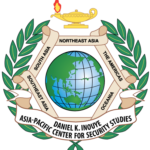By Deon Canyon, Sebastian Kevany and Michael S. Baker*
Introduction
The monitoring and surveillance of novel and variant, emergent and resurgent, infectious viral diseases is a core need for global health and national security. The United States has not, to date, put a priority on the funding and resourcing of private and public laboratories to identify and monitor Covid variants and mutations. While the U.K. sequences 10% of its positive cases, the U.S. currently only inspects around 0.3-1.5% of positive tests for the presence of viral mutations, which is lower than Gambia, Senegal and even Latvia.
This created a “gaping hole in national security” as new virus variants continue to plague the world. Even the new and more proactive administration’s corrective National Strategy for the COVID-19 Response and Pandemic Preparedness, published in January 2021, failed to address this critical issue.
The Tracking COVID-19 Variants Act was introduced into Congress on February 4, 2021 to correct this – and aims to provide $2 billion to “ramp up national sequence-based surveillance and support our public health infrastructure.” However, as this paper will show, the U.S. has other significant resources within its Department of Defense (DoD) that can be brought to bear quite rapidly in this regard, and in a globally significant manner.
Increased Viral Surveillance
Investing in research on the effects of each mutation, resourcing agencies involved in genetic sequencing, and international information sharing are all fundamental to tracking viral mutations globally in the hope of assisting more effective community and medical responses. Freely available genetic sequences isolated from Covid-positive patients are currently stored in a GISAID database in Geneva, Switzerland. Unfortunately, contributions to this database differ greatly between nations – though this is not associated with prosperity, technology, or population size.
For example, the U.K. has contributed 50% of the samples while the U.S. has only contributed 0.3%. This is problematic because the longer a virus remains in circulation without identification and sequencing, the more chance it has of mutating. If and when the Tracking COVID-19 Variants Act passes, the U.S. will move to the forefront in molecular viral detection. Stefano Bertuzzi, CEO of the American Society for Microbiology said, “Increasing sequencing capacity will play a key role in not only identifying, tracking, and mitigating the impact of the genetic new strains, but also vaccine development and distribution, testing, and getting our economy back on track.”
How Can the U.S. DoD Help?
The U.S. has the capacity to step up and create a defensive viral surveillance network to protect itself and the world from current and future catastrophic infectious disease outbreaks, but multilateral cooperation with all nations is an essential key to this strategy. The building blocks for this surveillance network are already present in the U.S. DoD, which created the Defense Threat Reduction Agency (DTRA) to coordinate plans and actions on nuclear deterrence, weapons of mass destruction, and biothreats in 1998. In response to the Ebola Outbreak in West Africa, DTRA was able to rapidly provide subject matter expertise, mobilize portable lab testing facilities, and disseminate field vaccines and treatment. In an emergency, DTRA can be supported by forward-deployed bases, forces, and surveillance resources.
Notably, the DoD has developed a network of overseas research laboratories that focus on infectious diseases that pose security concerns. The Armed Forces Research Institute of Medical Sciences (AFRIM) in Thailand, and the Naval Medical Research Units No. 2 (NAMRU-2) in Indonesia are positioned to assume significant leadership roles in Indo-Pacific-wide viral surveillance. NAMRU-2 is present in Thailand, Laos, and Singapore, and Cambodia: when these assets are networked with the U.S. Centers for Disease Control and Prevention (CDC), the Walter Reed Army Institute of Research (WRAIR), the Naval Medical Research Institute, and the National Center for Medical Intelligence (NCMI), they collectively form an effective and potent viral surveillance network that can then be expanded country by country.
Benefits of a Virus Surveillance Network for the Defense Sector
Among other considerations, the evolving pandemic environment requires ministries of defense to assess potential impacts of future pandemics on assumptions, doctrine and operational security constructs. Nations derive both goodwill and security from providing humanitarian assistance and disaster relief, while militaries use those opportunities to test various dual-purpose systems and joint service interoperability both during war and in peacetime. Of note, these operations may take place in disease-endemic areas or areas that are free of disease, with both having consequences for: (1) force and community protection; and (2) degree of commitment between the assistor and the assisted.
Yet, the coordination of international military training exercises and relief operations becomes increasingly more complex in the presence of novel variants and mutations as restrictions on travel, movement and engagement come into place. Military public health units therefore need to become well integrated with planners to meet the increasing demand for pandemic skills and training; health protection considerations in training and exercise programs assume greater importance as local surges in novel variants and mutations alter the parameters and requirements for not just exercises but also wargames and training for multiple, simultaneous crises.
As outbreaks shift in intensity from locale to locale, military personnel will inevitably be faced with operating in environments that are pandemic-degraded to a greater or lesser degree. The threat of viral infection and the actual spread of infectious agents requires preparedness in the form of personal protective equipment, prophylactics, medical care, and assistance for psychological well-being. In higher risk environments, when people must work together, infrastructure and vehicles require modification to reduce exposure to airborne and otherwise vectored disease pathogens, thus increasing environmental impacts and energy footprints.
‘Public Alignment’
Garnering cross-sectoral, whole-of-society alignment is crucial when disease agents rely on public behaviors for survival and dissemination. Creating social narratives that enlist popular support is essential for changing harmful behaviors, fostering commitment to action, and creating more advocates for positive action. As Covid became increasingly politicized in the U.S., the impact of politics may have significantly increased Covid deaths. Political choices by state governance, such as those related to mandating mask-wearing or staying at home, have been shown to directly impact infection rates and subsequent deaths.
Internationally, as well, most nations adopted a more proactive posture based on public health considerations rather than by political ideology to minimize the threatening outcomes of an evolving pandemic. Of particular note, from early on in the pandemic, nations that more successfully handled the pandemic, such as Taiwan, were able to project more diplomatic influence than nations with anti-science elements in government. The newfound influence of countries like New Zealand still prevails in the present day.
More broadly, as chronic diseases have become dominant, the number of infectious disease experts and doctors has decreased over time. This has created a shortage of personnel capable of preparing for and responding to episodic surges in infectious diseases. The potential for outbreaks to become national tragedies requires a reserve force. While some of these reservists may come from volunteers in the larger skilled civilian force, and even the private sector, the episodic nature of the threat renders it equally suitable for the military to be the primary preparing and responding force; the latter also often have extensive experience acquired through operating in international endemic areas exposed to a broader array of biological threats. The U.S Public Health Service is now capable of mobilizing an active duty medical and health-related expertise, and has just established a “Ready Reserve Force” which will be accessing staff this year.
These complex public health threats and opportunities are thus best managed with joint-force action, interagency collaboration, and international interoperability: when combined with the confusions of politics, however, they risk a descent into chaos. Similarly, for decades, humanitarian assistance and disaster relief exercises and operations have been a mainstay for practicing capacities and interoperability, but these efforts are reducing as nations become more self-sufficient. Thus, the future of humanitarian assistance needs to both (1) be framed and designed as an apolitical effort and (2) be rethought in a world in which pathogen response is growing in importance.
Conclusion
While infectious diseases may eventually become a thing of the past, they currently continue to evolve and disrupt nations around the globe. This process is exacerbated by demographic, political, and climate change pressures on populations that push humanity into habitats that were once wilderness or were considered unfit for living. Thus, our potential exposure to novel agents remains on the rise in line with population growth. The next pandemic may yet strike while we remain exposed due to rapid, unsustainable urbanization, climate change, destructive food harvesting and producing practices, globalization, and reliance on other nations for essential items.
At the broadest level, humanity’s resilience depends on our ability to gain insight into how these driving forces of change will play out in the years to come. In facing these complex public health and humanitarian challenges, governments must develop more insightful and coherent policies that include a more significant role for the security sectors. Investment in thought leadership and serious consideration of what might be coming down the road in the future must likewise become ingrained in our organizations as we strive to mitigate these ‘known unknowns’. As we continue to face an evolving and mutating Covid as well as other future biothreats, the U.S. and partner nations need to invest in a robust and responsive international viral surveillance network so that the governments of the world can be provided with leadership in responding more rapidly, cohesively, and effectively to protect their populations.
* Drs. Canyon and Kevany are professors at the Daniel K. Inouye Asia-Pacific Center for Security Studies (DKI APCSS) in Honolulu, USA. Dr. Baker is a retired U. S. Navy rear admiral. The views expressed in this article are the author’s alone, and do not necessarily reflect the official position of the DKI APCSS or the United States Government.
The views expressed in this article are the author’s alone, and do not necessarily reflect the official position of the DKI APCSS or the United States Government. May 5, 2021
Published: May 6, 2021
Category: Perspectives
Volume: 22 - 2021





